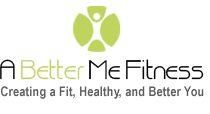Don't Fall Prey to Deceptive Marketing
/Deceptive Marketing:
We live in a world where marketing prevails. It’s exciting, colorful, and scary. Advertising has the power to create demand, to initiate trends, and even to sway public conception. It gets into our heads and tricks us into thinking something is better, stronger, or healthier.
As our society becomes increasingly infatuated with health, brands continue to direct their marketing efforts to appeal this, which makes shopping harder for virtually everything. This post seeks to help you weed out the deceptive health claims and understand how to read labels and ingredients. We’re talking popular health claims and what they really mean and swapping some popular items for their healthier counterpart.
“Healthy” claims
Natural: This marketing claim is everywhere- from poultry, meat, dairy, and even preserved items like fruit cups and chips! What does it actually mean?
According to the FDA, the term “natural” means that nothing artificial or synthetic (including all color additives regardless of source) has been included or added to a food that would not normally be expected to be in that food. Pretty ambiguous, wouldn't you say? There are many products labeled “natural” which are minimally processed and preserved, though there are many items that are not as deserving of the title, such as deli meat, chips and crackers, fruit preserve cups, dairy products, and even soft drinks. These products may still contain ingredients meant to preserve, thicken, and color the food items.
Shop smart: Natural may be better, or it may be a simple ploy to con shoppers into spending a few bucks more. Check the ingredient list- the overarching recommendations usually stand: the fewer ingredients the better, and if you can pronounce most of the ingredients, you’re good.
Organic: Don’t you just feel better when you purchase “organic?” This claim is backed by its regulation- you should feel better! For the most part.
The labeling requirements are stricter than others. According to the eCFR-Code of Federal Regulations, the foods must be produced “without excluded methods” (i.e. genetic engineering or radiation). For foods labeled organic, preservation methods must not contain those nasty sulfates or nitrates. Any ingredient must also not be added solely for the purpose of flavor, color, or texture enhancement. In crop production, the most basic, safe, and least-harmful methods of maintenance, disinfectants, and repellents are permitted with very strict regulations.
Big picture? Organic is expensive, there is no dispute. You should also note that “organic” ensures the ingredient quality, not the nutritional quality. Shopping organic is mainly going to benefit your produce selection, not your chip selection ;-). Shop smart: purchase organic when buying produce which is grown above ground and where the skin is consumed, such as tomatoes, leafy greens, peppers, apples, berries, strawberries, and grapes. These foods are in direct contact to higher volumes of pesticides and may be artificially color-enhanced. However, I would always recommend non-organic produce over none at all!!
Non-fat, Lowfat, and Trans Fat: Fat contains 9 calories per gram, as opposed to its fellow macro-nutrients, proteins and carbohydrates which contain 4 calories per gram. Thus, it MUST be evil! Right? WRONG! Your body needs fat for energy, regulating hormones, performing basic cell functions, transporting vitamins, and keeping your skin healthy! We just need the right fat- aka NO TRANS FAT!
The explosion of trans fat in the American diet can be attributed to its long shelf life, affordability, and convenience. Trans fat comes from the partial hydrogenation of oils, where chemical makeup is disturbed. This man-made fat molecule is known to lower good cholesterol and increase the bad cholesterol, clog your arteries, create insulin resistance, and contribute to type 2 diabetes. This type of fat is found in many packaged foods- like chips, cookies, breads, candies, and creamers. Be on the lookout for an ingredient list containing “partially hydrogenated” and “shortening.” NOTE: There may still be trans fat even if the label doesn’t say so- the FDA mandates that there be less than .5g per serving to be excluded from the label. Have you ever wondered why one serving of Oreo's is only 3 cookies? Sneaky!!
Now to “fat-free” and “lowfat.” Firstly, fat tastes good! When fat is taken out of a product, something needs to be added to it to return to its yummy expectation: SUGAR! Look at any two of the same products where one is fat-free- how much extra sugar is added in that product? Unfortunately, the sugar added is usually a cheap substitute, like high-fructose corn syrup, dextrose, maltose, malt syrup, sucrose, or something along those lines, which can be even more detrimental to our health. To make it worse, many of the non-fat substitute ingredients often cause digestive issues and can lead to weight gain!
Shop smart: Try to avoid “fat-free.” When picking products like condiments, frozen treats, packaged snacks, and many dairy products, opt for the original product. Secondly, try to reduce trans-fats. Some of these products are going to be hard to get away from, but by changing a few of your choices in the grocery store can make a huge difference. Some of the biggest products to be cognizant of are peanut butter, packaged snacks like cookies, chips, crackers, breads, and creamers. Choose peanut and almond butters where you can see the oil separation and that need to be refrigerated after opening. When picking snacks, avoid many of the big-name commercial brands, like Skippy and Jif, Nabisco products like Ritz, Oreo's, 100-Calorie packs, Honey Maid, Wheat Thins, and more. Often there will be alternative options among these items which are produced without hydrogenated oils.


